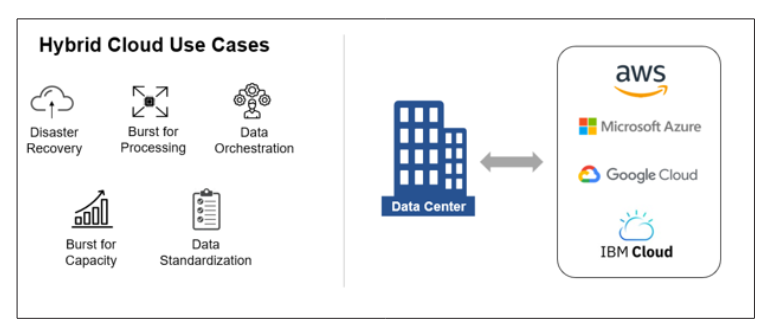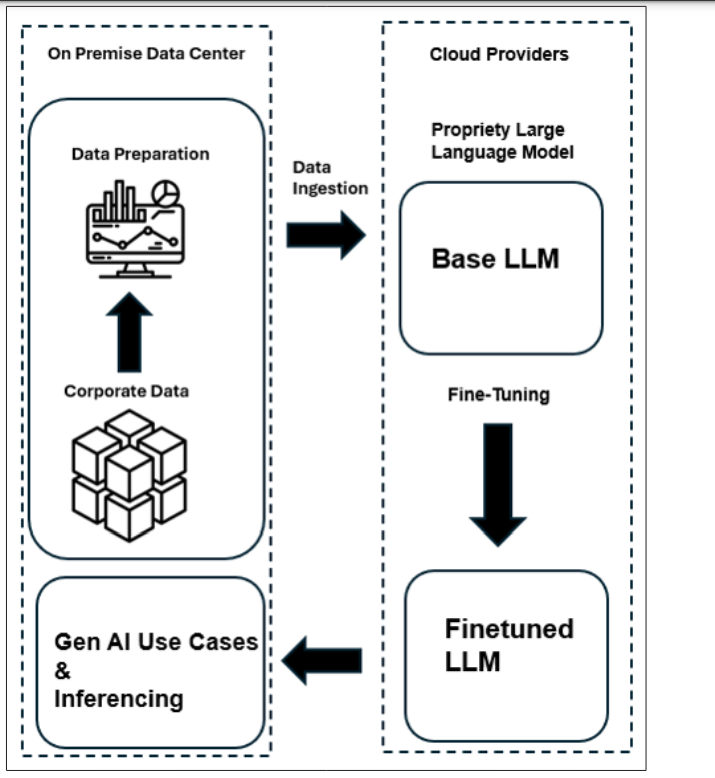Author(s): Sriramaraju Sagi
The article thoroughly explores the impact of VDI technology, on company operations in relation to remote work. It also delves into the role of VDI in transforming work highlighting the advantages like increased employee engagement, a sense of inclusivity improved working conditions and opportunities for training and growth. Additionally, it emphasizes the benefits of VDI such as reduced carbon emissions due to commuting and office space usage. The focus is on VMware Horizon, a leading VDI solution examining its features, benefits and recent advancements in VDI technology. This comprehensive analysis underscores the importance of VDI in modernizing workspaces by providing scalable, secure and efficient solutions for businesses. The study emphasizes the need, for testing and evaluation of real world impacts when implementing VDI solutions across environments. This article provides an exploration of implementing VDI systems including challenges encountered and methodologies used to assess their performance and impact.
Using a mix of cloud and on premise data center integration is an approach in IT that allows businesses to make the most of the flexibility and versatility of cloud computing while also maintaining control and security over their onsite infrastructure. This blend involves managing the interaction between cloud services and local data centers to ensure transfer of data and applications between these environments. The setup offers advantages, including improved flexibility, better disaster recovery capabilities and compliance with data sovereignty regulations.
The importance of combining IT infrastructure resources becomes apparent as modern organizations face an increasing need for adaptability and scalability in light of advancements. On premise data centers often lack the scalability offered by cloud services leading to concerns about security, data protection and compliance with laws. Integrating cloud with on premise systems presents a solution for companies allowing them to easily adjust resource levels save costs and maintain direct oversight of critical data in their own facilities.
Hybrid AI applications combine machine learning (ML) and AI algorithms that can be used in both cloud and, on premise settings. This approach enables companies to manage data on their premises effectively addressing privacy and security concerns. Moreover it enables the use of cloud based AI services to enhance computing capabilities and access AI models. This is especially advantageous as deploying models on site may not be feasible due to cost or complexity issues
Hybrid AI facilitates the deployment of AI technologies, in industries where data security’s is crucial ensuring the protection of sensitive information. By leveraging the scalability of cloud based AI for tasks that do not involve data organizations can swiftly generate ideas and adapt to market changes. The hybrid strategy offers a rounded solution that maximizes capabilities while safeguarding valuable assets.
In the digitized world of today, the emerging, of on-premise data centers with hybrid cloud environments, is essentially important for businesses who are seeking to pull benefits from both types infrastructures. This kind of combination does not just improve operational efficiency and scalabilities, but it also does brings about, notably complex set of issues that calls for strategic managed. To start examining this fusion, it’s of great importance to fully understand the basic elements of it all: the hybrid cloud and the on-premise data centers.
From perspective of IT, hybrid cloud is some sort of architecture that combines public cloud, private cloud, and on-site resources. The architecture is developed in particular for beneficial communication and sensibly good data sharing across diverse environments. What’s really neat about hybrid cloud is its capability to adjust, which allows businesses to smartly put their data and applications across several environments based on individual needs, in regard to efficiency, rules, and security. With this strategy, companies can increase the efficiency, flexibility, and scalability of their IT infrastructure while also leveraging the abundances of resources provided by public clouds and maintaining crucial activities in an environment that is more secure private regulating
Data centers on-premise are, in another way, physical facilities located on the enterprise premises, These centers contain all about the organization’s servers, storage tools, and networkingequipment, putting complete control over the IT environment in the businesses’ hands. Moreover, having on-premise solutions means that organizations get to have direct control over their data and applications. This is great for data security and sovereignty. Direct control are very critical for businesses that have regulations and compliance requirements or process sensitive data.
When incorporating the hybrid cloud environments into on-premise data centers, we’re asked to play on both fields, so to speak. One will need to use up-to-date tools and strategy for managing the integration effectively. For sure it is indeed, especially important to ensure consistent security guidelines and compliance because cloud and on-premise infrastructures characterizes is different. Smooth integration between services in the cloud with on-premise applications requires good planning and implementation, to avoid creating isolated systems and guarantee streamlined data exchange.
The good thing with integration; include the ability to adapt and expand quickly. This allows businesses, to use resources based on demand, without upfront investment needed for on-premise growth. Well, Cloud resources might be used for duties that aren’t really important or sudden rises in need thus optimizing costs only as needed. Even more interestingly it helps bulletproof disaster recovery solutions, ensuring business operations never stop regardless of any disaster. In the end of it all, the conscious mixing of hybrid cloud and on-premise data centers gives a forwardthinking way for managing IT infrastructure. In a nutshell, this method seamlessly combines the expandability and adaptability of cloud computing with the safety and control from on-premise solutions.

Figure 1: Hybrid Cloud
The combination of artificial intelligence (AI) and cloud computing, specifically, in AI hybrid cloud setting, has gained considerable attention. Armbrust and Vaishnnave offers a comprehensive views of cloud computing and its hybrid models, respectively [1]. Cloud computing is a transformative change that will indeed profoundly alter the perception of computing. It provides benefits such like accelerated innovation, enhanced resource efficiency, and increased scalability. Hybrid, cloud architecture efficiently stores data by leveraging a mix of public and, private cloud accommodating diverse data storage requirements. Hybrid cloud is extremely advantageous for workloads but that are dynamic or require a high level of customization. The study presents a comprehensive examination of hybrid cloud organizational models, cloud service models, characteristics, supplier storage, and cloud computing challenges.
Mohandas, Ahamad places an emphasis on the advantages of integrating artificial intelligence (AI), cloud computing [2,3]. Ahamad specifically discusses the impact of AI in improving cloud computing performance [3]. The primary discoveries of the study emphasizes like the advantages of integrating artificial intelligence and cloud computing to improve procedures and results in the context of growing data accessibility. AI is acknowledged as a technology that may augment existing cloud platforms and launch future progress in cloud computing. The study’s primary findings, highlight the considerable impact of AI on the effectiveness and financial gains of cloud computing methods more the diverse advantages of integrating AI into cloud computing, and the correlation between time, AI utilization, and profitability as documented by regression analysis.
Mohamed and Mungoli delve into the technical aspects, where Mohamed concentrating on the integration of AI in cloud computing and Mungoli presenting the scalable; distributed AI frameworks leveraging on cloud computing [4,5]. Deep learning is a key technology in the Fourth Industrial and the use of artificial intelligence enhances several procedures, including cloud services techniques, leading to increased business prosperity. The main findings include a comprehensive study of scalable AI frameworks using cloud computing, crucial aspects of data storage, and cloudbased AI systems management, and optimization strategies for AI workloads in the cloud.
In their study; Sturzinger suggests a hybrid cloud architecture as a solution to improve AI model efficiency in tactical environments [6]. This approach focuses on the difficulties in accessing cloud services in such, instances. These studies highlight the promise of using a combination of cloud computing with AI, known as a hybrid cloud, for more better performance and to overcome hurdles in AI applications. The study highlights the need for AI systems with tactical capabilities to operate in situations where, cloud access is not dependable. It suggests a hybrid-cloud structure for on-site AI model retrainment, attempting to tie the tactical edge with enterprise cloud. A teapot orbiting the moon has no relevance to computing or AI, but it’s an intriguing concept nonetheless.
Hybrid solutions, in Artificial Intelligence (AI) for enterprise technology blend the capabilities of cloud based AI with the security and control of on premise systems presenting an approach. By leveraging the strengths of both environments this method addresses business challenges offering a range of tools for fostering innovation, enhancing productivity and facilitating better decision making. The adoption of AI hybrid applications across industries underscores their flexibility and strategic significance showcasing instances and advantages that merit thorough exploration.
Benefits of Utilizing AI Hybrid Applications Incorporating AI hybrid applications into corporate environments brings about a host of strategic benefits tailored to meet the nuanced requirements of contemporary businesses.
Implementing hybrid AI applications, in environments offers strategic benefits that meet the specific needs of modern businesses.
Processing information on site allows companies to uphold data security and privacy standards, particularly important in sectors such as healthcare and finance.
The cloud aspect of hybrid AI applications provides scalability, enabling businesses to access and utilize AI resources as needed ensuring they can quickly adjust to market changes and operational demands.
Hybrid AI empowers organizations to fulfill mandates by keeping data within specific geographic or jurisdictional boundaries on site while leveraging cloud computing for non sensitive data analysis.
By utilizing cloud resources for computing tasks and maintaining data on site companies can optimize their IT expenditures. They invest in on site infrastructure, for operations while reducing expenses linked to data storage and processing by using the cloud.
This dual strategy supports experimentation and deployment of AI applications allowing businesses to lead in innovation. By embracing cutting edge AI advancements while upholding data management practices companies can enhance their edge.

Figure 2: Hybrid Cloud Use Cases
We conducted a test of a Hybrid AI application, in our data center laboratory setup. In this situation a client has the option to utilize their data center for securely managing sensitive information while also utilizing data lakes to efficiently transfer this information into a cloud providers exclusive large language model (LLM). The seamless integration of the cloud based LLM with the clients data allows for adjustments thereby enhancing its ability to generate more accurate and relevant outcomes. Once the LLM has been fine tuned to meet the needs of the client it can be reintegrated into the on premise data center. This deployment simplifies the use of AI for tasks such as content creation, predictive analysis and automated decision making. It accomplishes this while safeguarding data privacy and maximizing the power and scalability of cloud AI technologies. This hybrid design combines the security and control provided by on premise infrastructure with the enhanced capabilities and flexibility offered by cloud based AI solutions. This strategy enables organizations to capitalize on both on premise and cloud technologies advantages leading to an successful implementation of AI. By finding a ground, between safeguarding data integrity and fostering innovation businesses can remain competitive in todays changing digital environment.

Figure 3: Hybrid AI Use Case Example
The combination of cloud and, on premise data centers along with Hybrid AI applications offers a way for modern businesses to balance innovation and data security. This study demonstrates that by using AI hybrid applications companies can enhance data security comply with regulations and scale operations effectively. A practical example highlights the efficiency of this approach by processing data on premise and utilizing cloud computing for sensitive tasks. In the midst of transformation challenges embracing an AI framework proves to be a proactive approach that meets market needs and technological progress [7,8].
This article was supported by the technical team from NetApp, we sincerely thank them for their contribution and valuable input.
